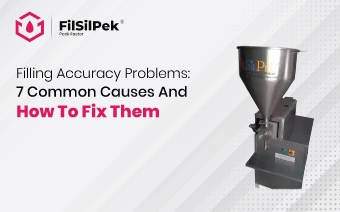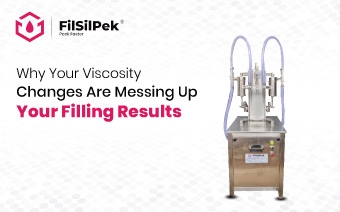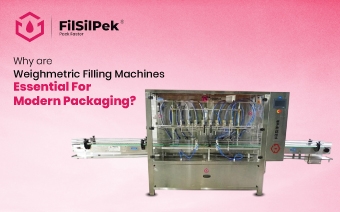Five Compelling Reasons to Adopt an Automatic Liquid Filling System in 2026
If you’re running a liquid packaging operation in 2025, you don’t need another glossy pitch about “digital transformation.” You’re dealing with real constraints: fill tolerances slipping during third shift, unexpected downtime from worn pump seals, or QA rejecting batches because manual operators missed a calibration check. These aren’t hypothetical they’re daily fires that eat into margins, delay shipments, and strain your team.
The truth is that semi-automatic or manual filling lines were never designed for today’s expectations. Customers demand perfect fill levels; regulators require full traceability, and retailers enforce strict compliance on everything from net contents to allergen cross-contact. Meanwhile, labor availability continues to shrink, and product portfolios keep expanding with complex SKUs thin serums, viscous sauces, carbonated beverages all running on the same aging line.
This article is about cutting through noise. We’ll outline five technically grounded, operationally proven reasons why transitioning to an automatic liquid filling system in 2026 isn’t just smart it’s essential for staying competitive, compliant, and scalable.
Why Can’t Shift Towards Automatic Filling System Be Avoided?
Many plants delay automation, thinking “next year” will be easier or cheaper. But every month of manual or semi-auto filling costs more in waste, labor strain, and compliance risk than most teams realize.
Technology is no longer out of reach. Modern automatic fillers are modular, easier to integrate, and built for real-world production not just lab conditions. They solve problems you’re already facing today, not ones you might face someday.
If your line struggles with inconsistent fills, staffing gaps, or hygiene audits, waiting only deepens those issues. The right system now can pay for itself faster than you think.
Five Operational Imperatives Driving the Move to Automatic Liquid Filling in 2026
For plant managers and operations leads, the decision to automate isn’t about chasing trends it’s about fixing recurring, costly problems that slow you down, increase risk, and limit growth. The five reasons below reflect real challenges we see across food, beverage, personal care, and chemical packaging facilities. Each one addresses a specific pain point with a technically sound, field-proven solution that delivers measurable ROI.
1. Eliminate Fill Variance at Source Not in Post-Production QA
In regulated industries (food, pharma, chemicals), fill accuracy isn’t optional it’s enforced by legal metrology standards (e.g., NIST Handbook 133, EU Directive 76/211/EEC). Yet many facilities still rely on time-pressure or gravity-based semi-auto fillers that drift with viscosity changes, temperature fluctuations, or pump wear.
Modern automatic fillers use closed-loop feedback systems typically mass-flow meters (Coriolis) or servo-driven piston/cylinder assemblies with real-time encoder feedback. These systems compensate dynamically for fluid properties and maintain ±0.5% fill tolerance across shifts, even with variable batch viscosities (e.g., sauces thickening in cold storage).
Why it matters: You stop chasing “out-of-tolerance” batches in QA and reduce giveaway often 1–3% of total product volume translating to six-figure annual savings for mid-volume producers.
2. Solve the Labor Crisis Without Sacrificing Flexibility
Finding skilled line operators is harder than ever. Even when staffed, manual filling stations suffer from fatigue-induced errors, inconsistent pacing, and high turnover. But automation doesn’t mean rigidity.
Today’s servo-controlled fillers (e.g., rotary or linear monoblock platforms) support quick changeover via recipe management. Switch between 50 mL dropper bottles and 1 L PET containers in under 15 minutes using HMI-stored parameters no mechanical tooling swaps. Integrated vision-guided grippers or servo-positioned nozzles auto-adjust for container height and neck diameter.
Real Use case: One mid-sized CPG brand reduced staffing needs by 60% on their filling line while increasing SKU count by 40% all without adding shifts or overtime.
3. Close the Hygiene Gap That Manual Handling Creates
Open-top filling with handheld nozzles or dip tubes introduces airborne particulates, skin cells, and microbial vectors especially problematic for aseptic or preservative-free products. Even with PPE, human presence is a contamination risk.
Automatic systems address this through fully enclosed fluid paths and validated cleanability. Look for:
- 3-A or EHEDG-certified wetted parts (e.g., electropolished 316L SS, PTFE seals)
- CIP/SIP (Clean-in-Place / Sterilize-in-Place) compatibility with automated cycle logging
- Positive air pressure zones around fill heads to prevent back-contamination
For oxygen-sensitive products (e.g., cold-pressed juices, biologics), integrated inert gas purging (N₂ or CO₂) can be synchronized with the fill cycle something impossible to replicate manually at scale.
4. Turn Downtime from a Mystery into a Managed Metric
Unplanned stops plague semi-auto lines: clogged nozzles, airlocks in peristaltic pumps, misaligned bottles causing spills. Troubleshooting is reactive and often undocumented.
Automatic fillers integrate IIoT-enabled diagnostics: vibration sensors on pumps, pressure transducers in fluid lines, and vision-based bottle presence detection. These feed real-time OEE (Overall Equipment Effectiveness) dashboards that flag micro-stoppages before they cascade.
- More critically, predictive maintenance algorithms can alert you to:
- Impending seal wear in piston cylinders
- Gradual loss of pump prime due to check valve fatigue
- Misalignment in servo axes affecting nozzle placement
This shifts your maintenance from “break-fix” to scheduled intervention boosting uptime by 15–25% in most documented cases.
5. Future-Proof for Traceability and Compliance Demands
Regulators (FDA, EU FIC, etc.) and retailers (Walmart, Amazon) now demand batch-level traceability. Manual logs or paper-based records won’t cut it.
Modern automatic fillers log every fill event with:
- Timestamped volume per container
- Operator ID (via login or RFID badge)
- Ambient conditions (temp, humidity if integrated)
- CIP cycle validation data
This data syncs directly to your MES or ERP via OPC UA or MQTT protocols enabling full lot genealogy. In the event of a recall, you can isolate affected units within minutes, not days.
Key Implementation Considerations for Automatic Liquid Filling System
Transitioning to an automatic liquid filling system requires more than just capital it demands strategic alignment. Here’s how to get it right:
- Start with fluid characterization: Viscosity, shear sensitivity, foaming tendency, and vapor pressure dictate whether you need piston, peristaltic, mass-flow, or pressure-gravity filling. Don’t assume one technology fits all.
- Demand modular architecture: Choose platforms that allow phased integration e.g., start with filling only, then add capping and labeling later without replacing the core.
- Validate cleanability early: Request a CIP validation protocol from the OEM. Ask for surface roughness (Ra ≤ 0.8 µm), drainability angles, and dead-leg analysis.
- Insist on open data protocols: Avoid proprietary black boxes. Your filler should output OEE, fill volume, and alarm history via standard industrial protocols (OPC UA, Modbus TCP).
- Factor in total cost of ownership (TCO): Include energy use, spare parts lead time, training hours, and expected MTBF (Mean Time Between Failures)not just purchase price.
A well-scoped pilot run using your actual product and containers can uncover 80% of integration risks before full deployment.
The Bottom Line
The decision to automate liquid filling system isn’t about chasing “Industry 5.0” buzzwords. It’s about solving five concrete, daily frustrations that erode margins, compliance, and team morale. The technology is mature, modular, and increasingly accessible even for SMEs thanks to scalable platforms and leasing options.
If your current system forces you to choose between speed and accuracy, hygiene and flexibility, or output and compliance you’re already paying the hidden cost of under-automation.
Ready to evaluate a system that fits your fluid dynamics, container portfolio, and regulatory context?
At Filsilpek Group, we engineer automatic liquid filling system solutions grounded in real plant-floor experience not brochure specs. Let’s run a line audit and model your ROI based on actual throughput, waste, and labor data. Contact our engineering team: [email protected]
Because in 2026, the best filler isn’t the fastest it’s the one that disappears into your process, working flawlessly while you focus on growth.
Filling accuracy problems: 7 common causes and how to fix them
In every production unit where filling is at the heart of operations…
Why your viscosity changes are messing up your filling results
If you run a business where product filling drives your daily output, you already know how tricky it gets to keep…
Why are weighmetric filling machines essential for modern packaging?
Modern packaging facilities are expected to deliver high-speed….



